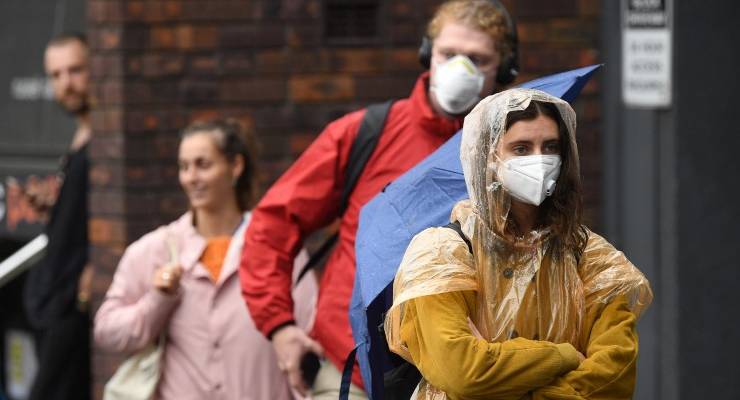
Whether yesterday’s shocker of a Consumer Price Index (CPI) number is enough to keep inflation hawks down remains to be seen. But for now, the urgent warnings from some economists that fiscal stimulus would only cause massive inflation looks to have been, well, a tad wide of the mark.
The warning that the pandemic would cause a supply-side shock that would send inflation soaring and deliver a ’70s-style burst of stagflation was mainly an overseas fashion earlier this year.
That noted fan of government debt, Ken Rogoff, warned of “generalised shortages” that would push inflation up. British economist Tim Congdon fretted that “the Federal Reserve’s preparedness to finance the coronavirus-related spending may prove suicidal to its long-term reputation as an inflation fighter … the state can create money out of thin air, but it cannot create new goods and services in the same way. If too much money is manufactured on banks’ balance sheets, a big rise in inflation should be expected.”
Concerns about inflation in the US — which had two months of deflation before recently posting a return to positive CPI — look particularly odd given the poor recovery there. In the US Federal Reserve’s post-meeting statement overnight chair Jerome Powell’s subsequent online media conference, it’s clear that the acceleration in COVID-19 infections is badly hurting the US economy.
“On balance, it looks like the data is pointing to a slowing in the pace of the recovery,” Powell said. “We have seen some signs in recent weeks that the increase in virus cases and the renewed measures to control it are starting to weigh on economic activity.”
In Australia, Andrew Charlton carried the inflationista standard, warning in March that “trying to stimulate your way out of a supply shock is like throwing water on a grease fire. In a worst-case scenario, stimulus can exacerbate the shock as panic-buying creates shortages and rising inflation.”
Despite some thoroughgoing panic buying by many of the more unfortunate members of the community during the pandemic, prices still fell 1.9% in the June quarter, the biggest ever fall in the series, pulling the annual CPI for 2019-20 to -0.3%.
And while, as most observers pointed out, the result was driven by some one-offs — free childcare, a big fall (since reversed) in petrol prices and free preschool in a number of states, even if those were removed, the result would have been a rise of 0.1%.
The Reserve Bank of Australia’s (RBA) preferred measures were no more encouraging: the trimmed mean fell 0.1% in the quarter, while the weighted median rose 0.1%. Safe to say it was another quarter in which the RBA undershot its inflation target.
Nonetheless, this was pretty much as expected, and mainly of historical interest. The CPI will “snap back” at least a little this quarter, higher oil prices, the reversal of free childcare and the removal of lockdown restrictions opening up retailing. The strong dollar (up 25% since the lows of US57.85 cents in late March) will also have a downward impact to offset those, but we’ll likely avoid more than a one-off period of deflation, which is deeply toxic to growth (just ask the Japanese).
The key indicator now, pretty much the only indicator that counts, is jobs, and the news wasn’t good there either: Tuesday’s payroll data showed jobs continuing to decline in the first full week of July, at the same rate as they declined in late-June — -0.6% each week. Unsurprisingly, the rate accelerated in Victoria, with 1.4% of jobs lost between July 4 and July 11, but in NSW jobs also fell 0.7% each week.
The rate of job losses did decline in Queensland and South Australia, and WA (where unemployment is nearly 9%) is not losing any jobs currently. Economists have also pointed out that the ABS may well revise this week’s figures upward and the July jobs data may end up better than expected — but at the moment the situation is gloomy not merely in Victoria but NSW as well.
It means that, nationally, we still haven’t hit bottom in the employment impacts of the pandemic, let alone commenced the long, slow process of getting unemployment back down.
And, contrary to what you might read in the media, it’s not all down to Victoria and the Andrews government. This is a national catastrophe that has a long, long way to go.









We’ve not had Stagflation since the days of Fraser/Howard. If we do get it again, then no surprise that it would occur under this current mob of incompetent, corrupt boobs.
Fiscal stimulus does cause massive inflation just not in wages and some prices. The share market is cracking on and house prices are not falling. When the stimulus stops, who knows where it will all end?
To paraphrase “deflation is toxic to growth”.
Even if that were true, why would that be “a problem”?
Unrestrained ‘growth’ is inimical to the common weal, a reality recognised by most sane people – this necessarily excludes economists, pollies, boosters, lobbyists and similar assorted lowlifes.
Bring on the reset!